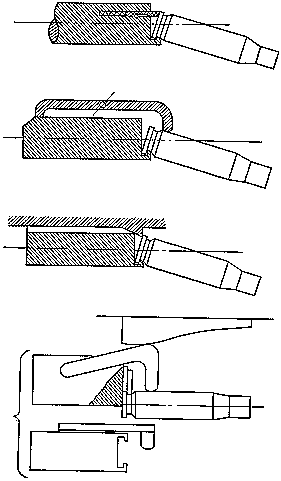
 Extracting
Extracting
 The empty case must be removed from the action so the next
round can be fed.
The ejector usually tips the case out of the gun by pressing
against the the back of the case opposite the ejection port.
The ejector can be a fixed piece of metal which strikes
the case when it and the bolt reach a certain position.
This is called a fixed ejector. Another type of ejector
is a spring powered plunger in the face of the bolt.
When the case is free of the chamber, the plunger forces
the case to flip out of the port.
The empty case must be removed from the action so the next
round can be fed.
The ejector usually tips the case out of the gun by pressing
against the the back of the case opposite the ejection port.
The ejector can be a fixed piece of metal which strikes
the case when it and the bolt reach a certain position.
This is called a fixed ejector. Another type of ejector
is a spring powered plunger in the face of the bolt.
When the case is free of the chamber, the plunger forces
the case to flip out of the port.
In order for this arrangement to work the extractor and ejection port are on the same side and the ejector is towards the opposite side of the bolt. On guns which can be made to eject either on the left or right (for left- or right-handed users) these parts must be reversed about the bore axis.
In belt-fed guns where the belt-type is disintegrating, the feed mechanism discards the empty belt links and the ejection system expels the empty cases. Disintegrating link belts are common on small arms machine guns. In the case of belt-fed systems where the belt remains intact and the feed system is closed, the extraction mechanism must place the empty case back in the belt. Modern Gatling cannon, especially those used in aircraft or enclosed spaces, often feed and extract this way.
Next Section:
Cocking
